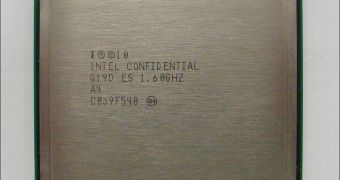Expected to become officially available in the fourth quarter of 2011, Intel's desktop Sandy Bridge-E processors, that can feature either four or six processing cores, will retain the Core i7 brand name used for the company's current high-end chips, according to a recent report.
The Core i7 brand was introduced in late 2008, with the launch of Intel's first processors based on the Nehalem architecture, which used the LGA 1366 socket and included four processing cores.
Currently, this designation is used not only for Nehalem chips, but also for a series of CPUs based on the Westmere and Sandy Bridge architectures.
According to documents seen by Xbit Labs, these will be joined soon by Intel's Sandy Bridge-E processors, which are scheduled to be released in Q4 2011.
The initial launch will include three desktop models, two fully unlocked CPUs with six computing cores and one quad-core partially unlocked processor.
The fastest of the two six-core processors has a base frequency of 3.3GHz, includes 15MB of Level 3 cache memory and its maximum Turbo Boost speed is rated at 3.9GHz, while its smaller brother is clocked at 3.2GHz and packs “only” 12MB of L3 cache.
Finally, Intel's quad-core Sandy Bridge-E CPU has a base frequency of 3.6GHz and comes equipped with 10MB of L3 cache.
All three processors use the LGA 2011 socket and require motherboards based on the Intel X79 Express chipset, code named Patsburg.
This will use a simple PCH design, as most of the functionality usually found inside the north bridge (ie. PCI Express controller) was embedded into the Sandy Bridge-E chips.
According to Intel's internal estimates, these processors will account for 1%-2% of the company's desktop CPU shipments by volume in the second half of this year. In comparison, the current Sandy Bridge chips will represent half of Intel's shipments in the same period of time.

 14 DAY TRIAL //
14 DAY TRIAL //